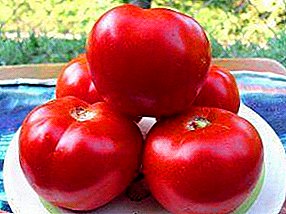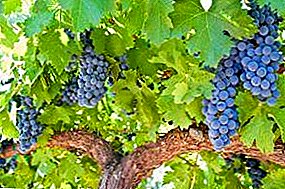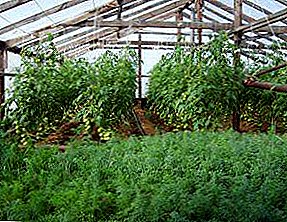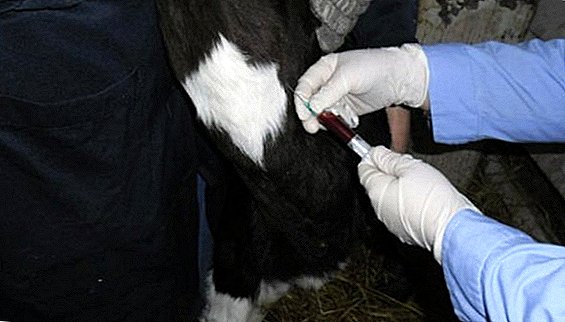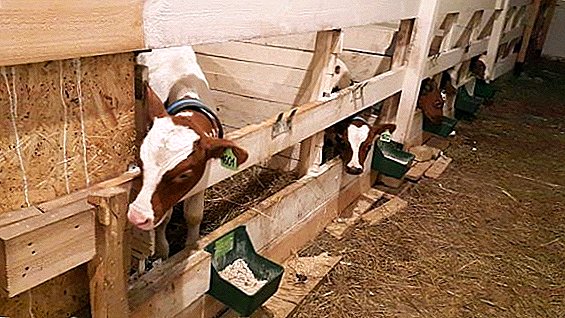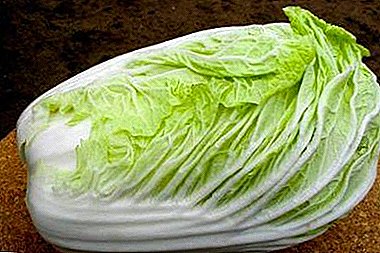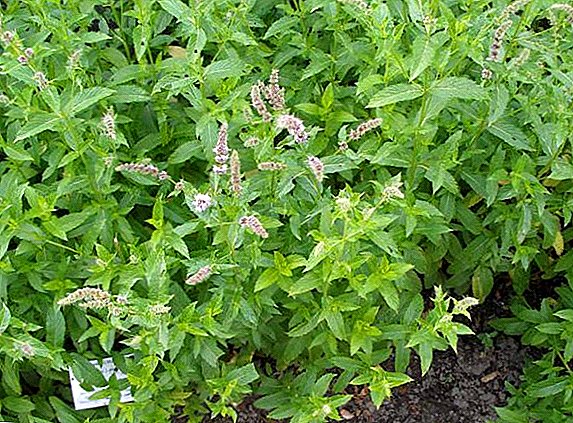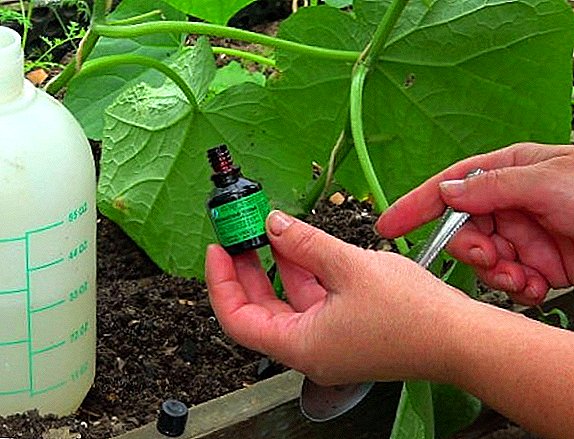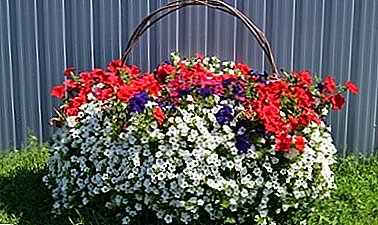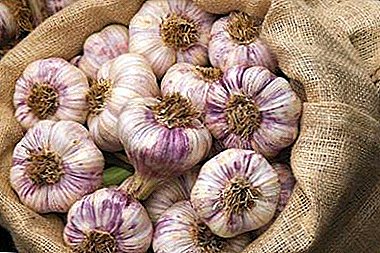
Choosing a variety of garlic (in the world there are about 600), evaluate the properties and qualities of seed. The progenitor grew high in the mountains. Modern varieties of garlic, like twins, are distinguished by planting dates in the fall and spring.
Lyubash's garlic, a new level of breeding, breaks all stereotypes. Unique properties, savory taste and delicious aroma raised it on a pedestal.
In our article we will tell you how to plant garlic and how to care for it. You can also watch a useful video on this topic.
Botanical description
Winter variety, mid-season, arrow. The term ripening garlic - 87-98 days. Acute, characteristic garlic taste and lasting aroma. Height 120-150 cm. The head is rounded-flat, 4-7 large teeth, weight up to 120 g. The husk is white, pinkish, with purple streaks. The leaves are dark emerald, dense and long, 2-2.5 cm wide, 45-50 cm long, standing, with a waxy coating.
Productivity to 36 centners from 1 hectare.
We recommend to watch the video about the peculiarities of Lyubash garlic:
Breeding history
 Lubasha cultivated a variety of breeders Ivan Zakharenko from Ukraine. On a field that had been empty for twenty years, two large bushes with large onions, the taste of hot pepper, grew.
Lubasha cultivated a variety of breeders Ivan Zakharenko from Ukraine. On a field that had been empty for twenty years, two large bushes with large onions, the taste of hot pepper, grew.
After lying through the winter, they are perfectly preserved. So from two onions in 2009 a new variety appeared - Lyubasha, named after the beloved mother-in-law of the breeder.
The variety is suitable for cultivation in most regions of Russia. Resistant to fungal diseases typical for culture. Universal, not afraid of low temperatures and drought. Unpretentious, undemanding to the soil. Yields are stable.
What is the difference from other varieties?
Suitable for cultivation in climatic zones and regions from Krasnodar to the Urals. The main difference of the variety is the ability to maintain the presentation 10-11 months.
Advantages and disadvantages
- Keeping quality when properly stored 10-11 months.
- Carries long-term transportation.
- Cold resistance.
- Stress resistant to weather.
- Delivers a lack of moisture.
- Transfers pest attacks.
- Resistant to fungal diseases, not affected by Fusarium.
- It is undemanding in leaving.
Serious shortcomings of Lyubasha are absent when the requirements of agricultural technology are met.:
- Necessary sunny place in the shade of poorly developed.
- With a lack of snow without mulching can freeze out.
What and where is it used for?
Use in fresh and dried form, in salads, dishes for baking, in cooking when salting, pickling and preserving, as a seasoning. Garlic pickled as a separate product.
The variety of healing properties
- Bactericidal: fights against pathogenic viruses, bacteria, germs and fungi.
- Accelerates the recovery of damaged tissue.
- For the heart and blood vessels:
- increases the strength of contractions of the heart muscle;
- prevents the formation of cholesterol;
- preventing the development of atherosclerosis;
- reduces the risk of blood clots;
- relieves vasospasm;
- lowering blood pressure.
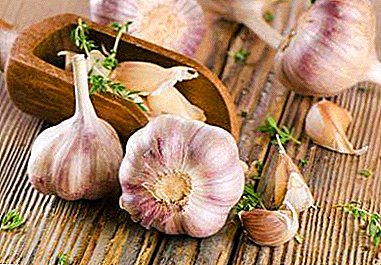 In case of broncho - pulmonary diseases, the inflammation of the mucous membrane of the respiratory tract is reduced, and the sputum is thinned.
In case of broncho - pulmonary diseases, the inflammation of the mucous membrane of the respiratory tract is reduced, and the sputum is thinned.- In oncology: it kills cancer cells in the mouth and bronchi, equivalent to chemotherapy.
- Activates immune cells.
- Helps the production of digestive enzymes.
- Choleretic, raw material for the production of allohol.
- It activates the sex glands and disinfects the urogenital system.
- Having in the composition of vitamin PP, warns of senile dementia.
- Anthelmintic agent.
- Promotes active longevity.
- A means of combating avitaminosis and scurvy.
Step-by-step instructions for care and landing
Where and for how much seed can be purchased?
- Internet - shop "Varietal seeds", p. Barybino, Moscow region. Bulboches, 10 pcs. 10-30 rub.
- Internet - shop "Russian garden", Schelkovo, Moscow region.
- In Moscow and St. Petersburg, purchased through the Internet by ads of individuals and farmers.
- In the online stores of Volgograd, Chelyabinsk, Krasnodar, packing - 10 units, cost: 170 rubles, 3 units - 49 rubles.
Landing time
Planting garlic in the autumn is better from late October to mid-November 3-4 weeks before the first frost.otherwise die. In the spring, in the wet ground after the snow melt, no later than mid-April.
The choice of location and soil
Necessary neutral, friable. High-quality digging at 30 cm. To give friability and airiness.
Planted every year in a new place, sunny, protected from the wind, without the presence of groundwater. Sites after:
- cabbage;
- greenery;
- melons;
- legumes.
Rooting
 Before planting, they pour 12 liters of humus and a liter of wood ash per 1 m2.
Before planting, they pour 12 liters of humus and a liter of wood ash per 1 m2.- 2 days before planting they are disinfected with a weak salt solution.
There are three breeding options Lyubasha:
- seed bulb, or "vozdushki";
- single-teeth grown for the second year from bulbokhek;
- Mature teeth.
Minus mature - when planting annually degenerate, deteriorating taste, sick plants.
- Bulb sorted by size and disinfected.
- On large areas planted trailed seeders.
- Large bulbs planted at the end of June and not replanting, left to winter.
Teeth received in a year from the bulbballs can be left in place. When planting in a new place to disinfect. Garlic from a bulbbok grow troublesome (two-year cycle), but economically, and there is an update of planting material.
- For teeth teeth pits 2 cm.
- Quenched 14-21 days in the refrigerator.
- Get a day before disembarking, disinfect a solution of cherry manganese in color or Fitosporin 15-20 minutes. Stimulants are used - Epin and Prestige, sodium humate for early germination and nutrition.
- Planting a wide part, pour ground.
- Pour over a mixture of ammonium sulfate and water 2 tbsp. l on 10 l on 1 - 2 m ².
- Dust the soil, mulch.
Temperature
During planting in the spring the soil temperature is +10 - +15 degrees.. The podzymny actively grows at +2, if lower, it does not have time to acclimatize and will die. The most optimal mode for the growth of spring +16 - +20 degrees.
Watering
The first watering in late April. In the morning or evening hours. 14 days before harvesting, watering is stopped. In the heat, water every week. Autumn is not required.
Abundant watering until mid-June. Untimely watering of winter varieties in the dry summer can destroy the harvest. Water consumption depends on the type of soil and planting site. Do not flood the earth and keep it dry.
Board: After watering, carry out weeding, with loosening.
Top dressing
Feed up:
- chicken droppings;
- rotted cow or horse manure;
- potassium fertilizer and phosphorus every 10 days;
- spring fertilization with nitrogen fertilizers (in liquid form).
Chernozem is added twice - in April and June. Third dressing 14 days before intended harvest.
Other vegetable care measures
- When shooters appear, pinch over 10 cm.
- For the winter mulch with peat, straw or something else. Do not overheat, saving from severe frosts, do not give the opportunity to germinate. Mulch layer 3 - 4 cm. After the snow melted, remove the mulch.
- Weeds are sowed regularly, they are carriers of diseases, their roots take nutrients.
- 2 weeks after the appearance of the first shoots, loosen the ground so that the air reaches the roots.
Harvesting and storage
Garlic ripens by mid-July. Willingness is determined by the yellow tips of the leaves.
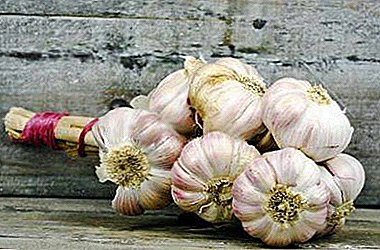 For two weeks, stop watering to dry the soil. Dig in dry weather, rot may appear damp.
For two weeks, stop watering to dry the soil. Dig in dry weather, rot may appear damp.- Head digging, shake off the ground.
- Removed in the shade, dried.
For long-term storage clean in a dry, dark room, laid out or hung from the ceiling. Periodically sorted out. Store at 0 degrees and slightly lower. The best primordial way is to braid the garlic in braids and hang them in a cold place.. In the winter of 2005-2006 tested for lezhkost, the quality almost did not change in 10 months of storage.
Diseases and pests
Resistant to fusarium and other diseases and pests.
But weakened plants can be attacked:
- Pathogenic microorganisms, such as:
- downy mildew;
- bacteriosis;
- neck rot;
- black mold
- Pest control:
- onion fly;
- stem nematode;
- onion hover;
- covertly;
- root mite, etc.
Prevention of various problems
During the growing season:
- Slow growth of feathers. So the plant lacks nutrition, it is necessary to feed the composition - 1 tablespoon of urea and 1 cup of bird droppings per 10 liters of water.
- Gray-white feathers - not enough moisture.
- Pale green shade - from excess moisture, limit watering.
- Feathers do not grow and turn yellow:
- lack of nutrition;
- excessive or insufficient humidity;
- freezing in winter;
- soil acidity;
- pests or diseases.
Conclusion
Garlic with the originally Russian name Lyubasha will become your favorite! The universal love for this variety among the inhabitants of the regions of risky unpredictable farming is due to its frost resistance, drought resistance, super-flatness and stable yield.
Choosing the best of the best in taste, you will never regret that you have purchased this miracle.


 In case of broncho - pulmonary diseases, the inflammation of the mucous membrane of the respiratory tract is reduced, and the sputum is thinned.
In case of broncho - pulmonary diseases, the inflammation of the mucous membrane of the respiratory tract is reduced, and the sputum is thinned. Before planting, they pour 12 liters of humus and a liter of wood ash per 1 m2.
Before planting, they pour 12 liters of humus and a liter of wood ash per 1 m2. For two weeks, stop watering to dry the soil. Dig in dry weather, rot may appear damp.
For two weeks, stop watering to dry the soil. Dig in dry weather, rot may appear damp.